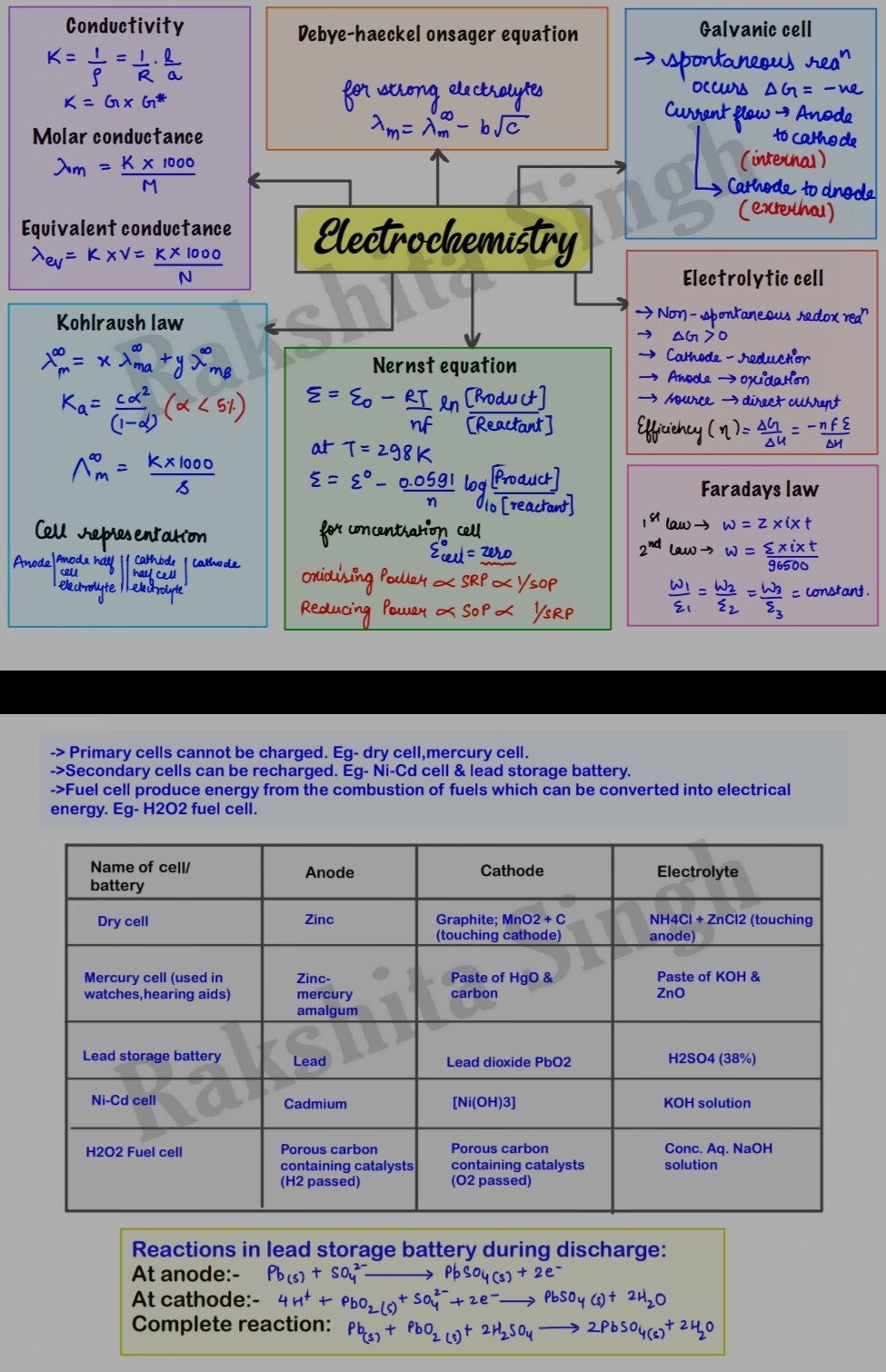Let’s revise th
e chapter ‘’ Kinetic theory of gases ‘’

Physics revision notes
#neet-ug #neet-ug:physics #neet-ug:neet-2022 #neet-ug:neet-2023 #neet-ug:neet-2025 #mentorship #exprto
@Shubhangi @Omprakash @Mentor.ayush @Dr.NishantJangra @Suman @Mbbs_dream @Ahuja @ExprtoMentors @Pranjalish
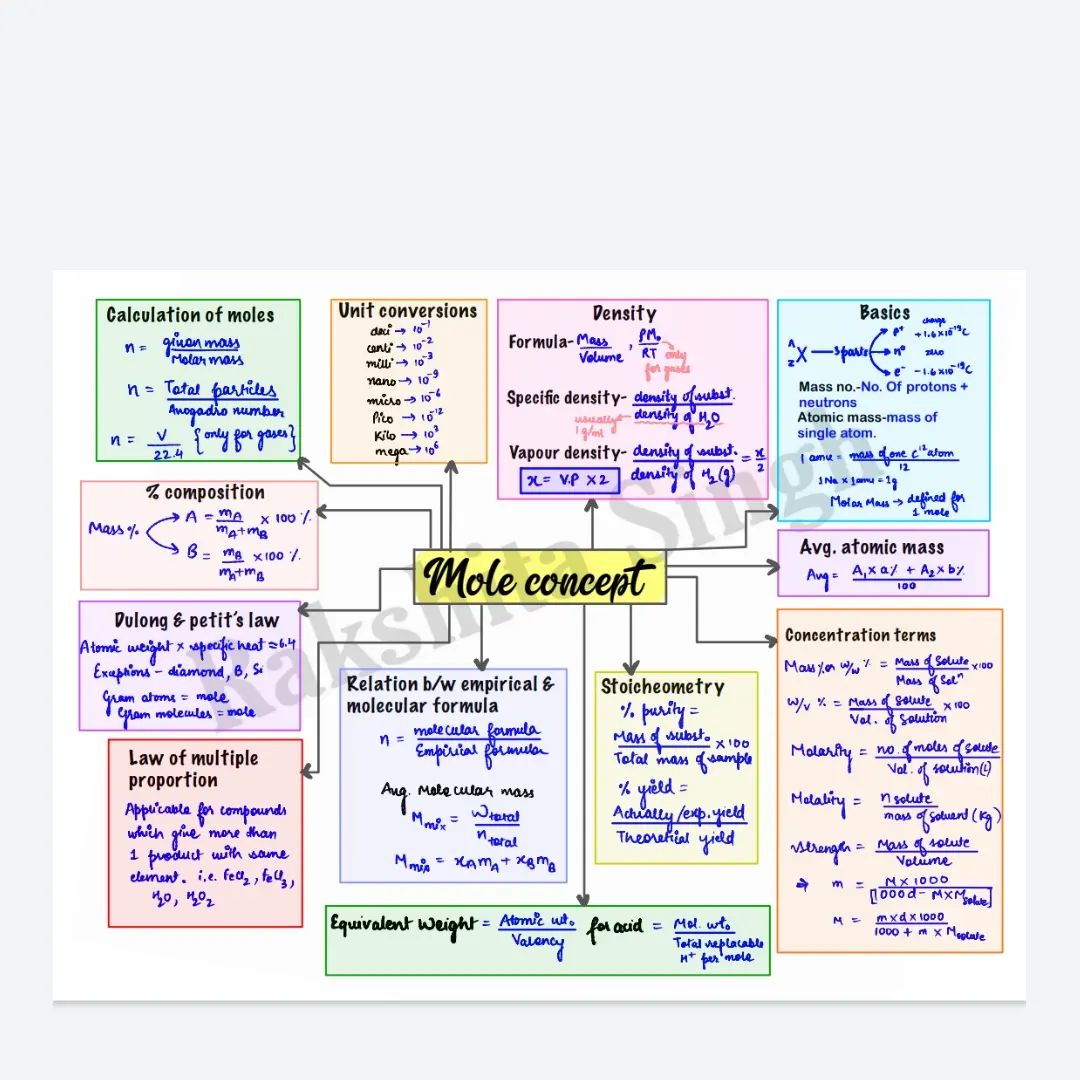
#neet-ug #neet-ug:physics #neet-ug:neet-2022 #neet-ug:neet-2023 #neet-ug:neet-2025 #mentorship #exprto #jee:jee-2023 #jee:jee-main #mentorship
@Shubhangi @Omprakash @Mentor.ayush @Dr.NishantJangra @Suman @Mbbs_dream @Ahuja @ExprtoMentors @Pranjalish @Rajpoot
How to manage previous topics revision along with current topics?
Golden rule for this is don’t skip today’s part of class for revision. Find extra time for it. Don’t ever and never waste weekends and holidays.
• Try to revise on daily basis.
• Make short notes/formula sheet/concept sheet after completing chapter.
• Watch one shot revision lecture on YouTube
• Revise through test - chapter wise/unit wise test ( give test, identify weak topics and revise them )
• Discuss important topics with friends
✓ Pro tip :- Take guidance and/or revise with your mentor.

#neet-ug #neet-ug:physics #neet-ug:neet-2022 #neet-ug:neet-2023 #neet-ug:neet-2025 #mentorship #exprto #jee:jee-2023 #jee:jee-main #mentorship
@Shubhangi @Omprakash @Mentor.ayush @Dr.NishantJangra @Suman @Mbbs_dream @Ahuja @ExprtoMentors @Pranjalish @Rajpoot
Hey!
First of all make a proper routine which you will be following till completion of syllabus.
The best way to tackle this problem is to divide your study time( self study time) into slots.
Suppose you study for 6 hours a day, then dedicate the first 3 hours to the revision of the content which you studied in the coaching that day, this way you wont forget the newly taught topics. And for the next 3-4 hours study the backlogs or if you dont have backlogs then you can revise previous topics or solve questions.This is the best way to cover both current and back topics together.
All the best
![]() पढाई करते समय ध्यान देने योग्य बातें:-
पढाई करते समय ध्यान देने योग्य बातें:-
-
पढाई हमेशा कुर्सी-टेवल पर बैठ कर ही करें . बिस्तर पर लेट कर बिलकुल भी न पढ़े, लेटकर पढने से पढ़ा हुआ दिमाग में बिलकुल नही जाता. बल्कि नींद आने लगती है।
-
पढ़ते समय टेलीविजन न चलाये और रेडियो या गाने भी बंद रखे
-
पढाई के समय मोबाइल स्विच ऑफ करदे या साईलेंट मोड में रखे।
-
पढ़े हुए पाठ्य को लिखते भी जाये इससे आपकी एकाग्रता भी बनी रहेगी और भविष्य के लिए नोट्स भी बन जायेंगे ।
-
कोई भी पाट्य कम से कम तीन बार जरुर पढ़े।
-
रटने की प्रवृत्ति से बचे, जो भी पढ़े उस पर विचार मंथन जरुर करें
-
शार्ट नोटस जरुर बनाये ताकि वे परीक्षा के समय काम आये ।
-
पढ़े हुए पाठ्य पर विचार -विमर्श अपने मित्रो से जरुर करें , ग्रुप डिस्कशन पढाई में लाभदायक होता है।
-
पुराने प्रश्न पत्रों के आधार पर महत्वपूर्ण टोपिक को छांट ले और उन्हें अच्छे से तैयार करें।
-
संतुलित भोजन करें क्योंकि ज्यादा भोजन से नींद और आलस्य आता है, जबकि कम भोजन से पढने में मन नही लगता है ।
-
चित्रों, मानचित्रो , ग्राफ , रेखाचित्रो आदि की मदद से पढ़े । ये अधिक समय तक याद रहते है।
#neet-ug #neet-ug:physics #neet-ug:neet-2022 #neet-ug:neet-2023 #neet-ug:neet-2025 #mentorship #exprto
@ExprtoMentors @Team_Exprto @Dr.NishantJangra @hima @Vamshi @Mbbs_dream @Rajpoot
It’s revision time
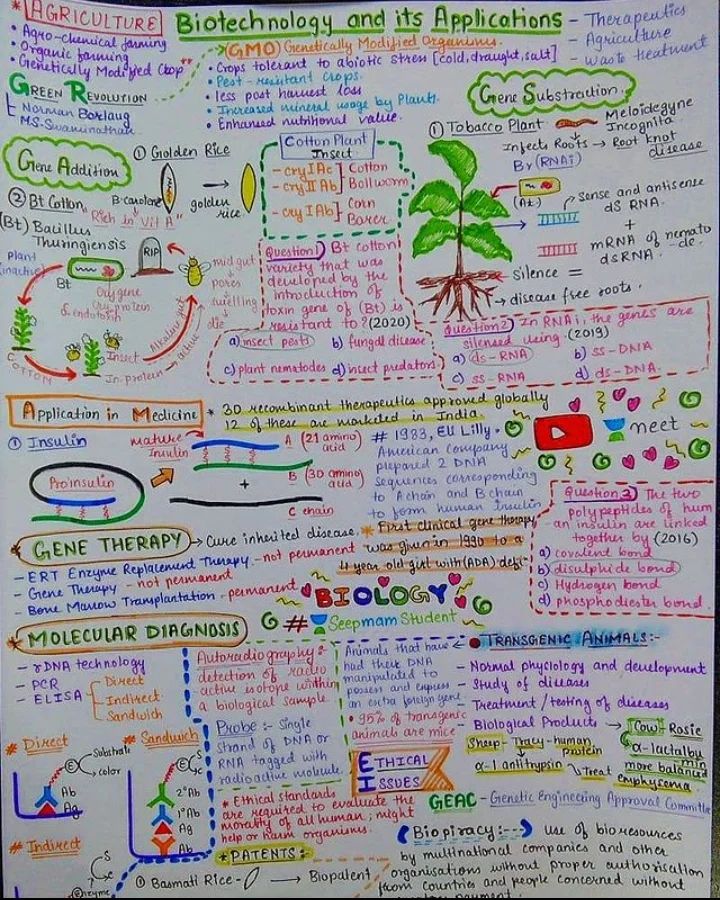
Biology :- Biotechnology and it’s applications
#neet-ug #neet-ug:physics #neet-ug:neet-2022 #neet-ug:neet-2023 #neet-ug:neet-2025 #neet-ug:biology #neet-ug:zoology #neet-ug:botany #mentorship #exprto
@ExprtoMentors @Team_Exprto @Dr.NishantJangra @hima @Vamshi @Mbbs_dream @Rajpoot
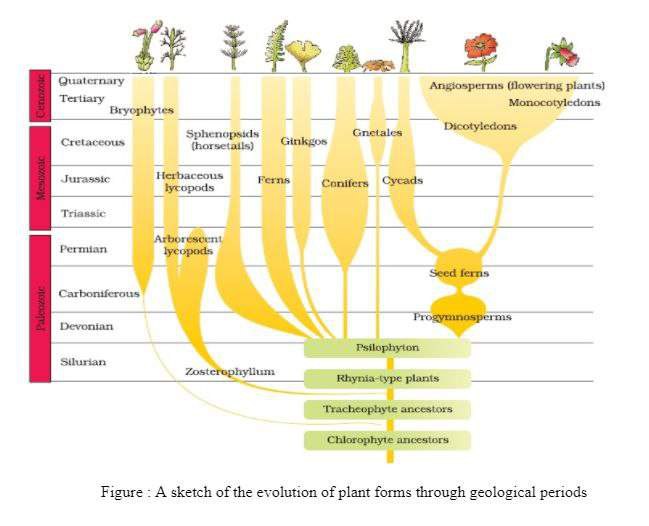
Biology Evolution chart review
![]() 4 Eons (कल्प)
4 Eons (कल्प)![]()
Proterozoic,
Archean,
Harden.
Phanerozoic
![]() 5 Era (युगों)
5 Era (युगों)![]()
Archeon,
Paleozoic,
Mesozoic,
Cenozoic,
Neozoic.
![]() 4 Epochs (काल)
4 Epochs (काल)![]()
Primary,
Secondary,
Tertiary,
Quaternary.
![]() 18 Period (अवधि)
18 Period (अवधि)![]()
Cambarian {570 mya}
Ordovician {500 mya}
Silurian. {435 mya}
Devonian {410 mya}
Carboniferous {360 mya}
Permian {290 mya}
Triassic {240 mya}
Jurassic. {205 mya}
Cretaceous {138 mya}
Tertiary
Paleocene {63 mya}
Eocene {55 mya}
Oligocene {38 mya}
Miocene {34 mya}
Pliocene {5 mya}
Quaternary
Pleistocene {2 mya}
Holocene {10000 year ago}
@Dr.NishantJangra @Dr.Priyankay @DrBhumika @Team_Exprto @Rajpoot
**Biology - Menstrual Cycle**
(1) Menstruation occurs in human, apes and old world monkeys.
(2) Menstruation is bleeding from the uterus of adult females at intervals of one lunar month.
(3) Beginning of menstruation or first menstruation is called menarche.
(4) The beginning of menstruation varies. It usually occurs between 12 and 15 years.
(5) The cycle of events starting from one menstruation till the next one is called Menstrual Cycle.
(6) In human females, menstruation is repeated at an average interval of about 28/29 days.
(7) One ovum is released (ovulation) during the middle of each menstrual cycle.
(8) It is regulated by certain hormones, some of which are secreted by the pituitary gland.
(9) The pituitary gland is stimulated by releasing factors produced in the hypothalamus.
(10) The hormones produced by the pituitary gland influence the ovaries. The hormones secreted by the ovaries affect the walls of the uterus.
Phases of Menstrual Cycle
The menstrual cycle consists of following four phases:
(1) Menstrual Phase:
(i) In a 28 days menstrual cycle,the menses takes place on cycle days 3-5.
(ii) The production of LH from the anterior lobe of the pituitary gland is reduced.
(iii) The withdrawal of this hormone causes degeneration of the corpus luteum and, therefore progestrone production is reduced.
(iv) Production of oestrogen is also reduced in this phase.
(v) The endometrium of uterus breaks down & menstruation begins.
(vi) The cells of endometrium secretions, blood & unfertilised ovum constitutes the menstrual flow.
(2) Follicular Phase:
(i) This phase usually includes cycle days 6-13 or 14 in a 28 days cycle.
(ii) The follicle stimulating hormone (FSH) secreted by the anterior lobe of the pituitary gland stimulates the ovarian follicle to secrete oestrogens.
(iii) Oestrogen stimulates the proliferation of the endometrium of the uterine wall.
(iv) The endometrium becomes thicker by rapid cell multiplication and this is accompanied by an increase in uterine glands & blood vessels.
![]() Various Events during a Menstrual Cycle
Various Events during a Menstrual Cycle
(3) Ovulatory Phase:
(i) Both LH & FSH attain a peak level in the middle of cycle (about 14th day).
(ii) Oestrogen concentration in blood increases.
(iii) Rapid secretion of LH induces rupturing of graffian follicle and thereby the release of ovum.
(iv) In fact LH causes ovulation.
(4) Luteal Phase:
(i) Includes cycle days 15 to 28.
(ii) Corpus luteum secretes progestrone.
(iii) Endometrium thickens.
(iv) Uterine glands become secretory.
![]() Hormonal Control of MC
Hormonal Control of MC
(i) FSH stimulates the ovarian follicles to produce oestrogens.
(ii) LH stimulates corpus luteum to secrete progestrone.
(iii) Menstrual phase is caused by the increased production of oestrogens.
(iv) LH causes ovulation
(v) Proliferative phase is caused by the increased production of oestrogens.
(vi) Secretory phase is caused by increased production of progestrone.
@Dr.NishantJangra @hima @Rajpoot @ExprtoMentors @Team_Exprto @Bandhavya @Aditi305
![]() Use this form to book a free demo session with us. (Only available for first time users who have never been a part of the Exprto community before.)
Use this form to book a free demo session with us. (Only available for first time users who have never been a part of the Exprto community before.)
![]() Important Points of NCERT
Important Points of NCERT ![]()
-
1770 : Joseph Priestley - Essential role of air in growth of green plant.
-
1774 : Joseph Priestley - Discovered O2.
-
1831 : Robert Brown - Ist discovered and described nucleus.
-
1838 : Schleiden (German Botanist) - Work on plants.
-
1839 : Schwann(British Zoologist) - Work on both plants & animals.
-
1855 : Rudolf Virchow - Omnis cellula-e-cellula (cells arises from
pre-existing cells). -
Life originate from pre-existing life : Pasteur (Yeast).
-
Life originate from non-living (decaying & rotting matter) : Spontaneous
generation. -
Life originate from pre-existing non-living organic molecules (RNA,
Protein)- Oparin (Russia) & Haldane (England)- Chemical Evolution. -
1856 - 1863 : Mendal experiment on garden pea. (7 years)
-
1860 : Julius von Sachs - Developed hydroponics.
-
1865 : Mendal published his work.
-
1866 : Langdon Down - Down’s syndrome.
-
1869 : Friedrich Meischer - Ist identified DNA and named it nuclein.
-
1891 : Henking - Discovered X-body.
-
1891 : Fossil discovered in Java - Homo erectus.
-
1892 : Ivanowsky - Discovered virus.
-
1898 : Beijerinek - Contagium vivum fluidum (infectious living fluid).
-
1898 : Camillo Golgi - Discovered (observed) G.B.
-
1900 : de Vries, Corre ns and von Tsche rmak inde pende ntly
rediscovered Mendel’s results. -
1902 : Chromosome movement during meiosis has been worked out.
-
1905 : Law of limiting factor (Blackmann).
-
1928 : Fredrick Griffith - Transforming experiment with Streptococcus
pneumoniae (Diplococcus). -
1935 : Stanley - Crystallised viruses.
-
1937 : Ramde o Misra obtained Ph.D. in Ecology from Lee ds
university (U.K.). -
1938 : Coelocanth fish caught in South Africa.
-
1945 : Fleming, Chain & Florey - Awarded Nobel prize.
-
1950 : Watson obtained Ph.D. on a study of the effect of hard X-rays
on bacteriophage multiplication. -
1951 : Family planning programme started in India.
-
1952 : Hershey & Chase-experiment on bacteriophage or Bacterial virus
gives unequivocal proof that DNA is the genetic material. -
1953 : Miller experiment - Methane, ammonia, hydrogen & water
vapour. -
1953 : Watson & Crick - Double helical structure of B-DNA &
replication scheme. -
1953 : Palade : Discovered ribosome.
-
1954 : Ramachandran - Triple helical model of collagen, published
in Nature. -
1954 : Crick complete d Ph.D. on a thesis “X-rays diffraction :
polypeptides and proteins. -
1958 : Meselson & Stahl - Work on E.coli proves semiconservative
replication of DNA in prokaryotes. -
1958 : Taylor - Work on Vicia faba proves semiconservative replication
of DNA in eukaryotes. -
1960 : Katherine Esau - Published “Anatomy of Seed Plants.”
-
1961 : Melvin Calvin - Nobel Prize.
-
1962 : Watson, Crick and Wilikins - Nobel Prize.
-
1963 : Wheat varieties (Sonalika & Kalyan sona) introduced.
-
1963 : Two enzyme responsible for restricting growth of bacteriophage
in E.coli were isolated. -
1966 : Derivative of IR-8 & Taichung native-I introduced.
-
1969 : Whittaker - Five kingdom classification.
-
1971 : Govt. of India legalized MTP.
-
1971 : Diener- Discovered Viroid(free RNA without capsid).
-
1972 : Singer & Nicolson - Fluid mosaic model.
-
1972 : Stanley Cohen & Herbert Boyer - Formed Ist recombinant DNA.
-
1972 : Establishme nt of NCEPC - National Committe e for
Environmental Planning & Coordination. -
1974 : Water act.
-
1980 : Joint forest management, (JFM).
-
1981 : AIDS was Ist reported.
-
1981 : Air act.
-
1983 : Eli Lily (An American company) produces insulin in E.coli by
recombinant DNA technology. -
1984 : Establishment of MOEF : Ministry of Environment & Forest.
-
1986 : Environment Protection Act.
-
1987 : Montreal protocol. Held in Montreal, Canada.
@Dr.NishantJangra @Team_Exprto @ExprtoMentors @Rajpoot @hima @Dr.Priyankay @DrBhumika @TausifL @Bandhavya
![]() Use this form to book a free demo session with us. (Only available for first time users who have never been a part of the Exprto community before.)
Use this form to book a free demo session with us. (Only available for first time users who have never been a part of the Exprto community before.)
Important Points of The Chapter :
“Reproduction in Organisms”
![]() Parthenogenesis: Development of an egg into an embryo without fertilisation.
Parthenogenesis: Development of an egg into an embryo without fertilisation.
Eg. Rotifers, honeybees, turkey and some lizards.
![]() Meiocytes are specialised cells of diploid organisms which undergo meiosis to produce gametes.
Meiocytes are specialised cells of diploid organisms which undergo meiosis to produce gametes.
![]() Monoecious Plants: Plants having both male and females flowers on same Individual. E.g. Cucurbits and coconut.
Monoecious Plants: Plants having both male and females flowers on same Individual. E.g. Cucurbits and coconut.
![]() Dioecious Plants: Plants having male and female flowers on separate individuals. E.g. Papaya and date palm.
Dioecious Plants: Plants having male and female flowers on separate individuals. E.g. Papaya and date palm.
![]() Bamboo species flower only once in their life time generally after 50-100 yr .
Bamboo species flower only once in their life time generally after 50-100 yr .
![]() Strobilanthus kunthiana: Flowers once in 12 years. (Kerarala, Karnataka and Tamil Nadu)
Strobilanthus kunthiana: Flowers once in 12 years. (Kerarala, Karnataka and Tamil Nadu)
@Dr.NishantJangra @Rajpoot @Aditi305 @Bandhavya @Team_Exprto @ExprtoMentors @DrBhumika
![]() Classification Based on R-group of amino acids
Classification Based on R-group of amino acids
(a) Simple amino acids: These have no functional group in the side chain. e.g. glycine, alanine , leucine, valine etc.
(b) Hydroxy amino acids: They have alcohol group in side chain. e.g. threonine, serine, etc.
(c) Sulphur containing amino acids: They have sulphur atom in side chain. e.g. methionine, cystenine.
(d) Basic amino acids: They have basic group (-NH2) in side chain. e.g. lysine, arginine.
(e) Acidic amino acids: They have carboxyl group in side chain. e.g. aspartic acid, glutamic acid.
(f) Acid amide amino acids: These are the derivatives of acidic amino acids. In this group, one of the carboxyl group has been converted to amide (-CONH2). e.g. asparagine, glutamine.
(g) Heterocyclic amino acids: These are the amino acids in which the side chain includes a ring involving at least one atom other than carbon. e.g. tryptophan, histidine.
(h) Aromatic amino acids: They have aromatic group (benzene ring) in the side chain. e.g. phenylalanine, tyrosine, etc.
===========================================
@ExprtoMentors @Team_Exprto @Rajpoot @Dr.NishantJangra @DrBhumika
Short Trick of Amphoteric Metals & Oxides
![]() Trick to learn Amphoteric Oxides.
Trick to learn Amphoteric Oxides.
Zanabe Aali Ne Bekar Crke Gaya
Punjabi Song!
‘जनाबे आली ने बेकार करके गाया पंजाबी सॉन्ग’
ZnO ➾ Zanabe
Al2O3 ➾ Aali Ne
BeO ➾ Bekar
Cr2O3 ➾ Crke
Ga2O3 ➾ Gaya
PbO ➾ Punjabi
SnO ➾ Song
![]() Trick to learn Amphoteric Metals.
Trick to learn Amphoteric Metals.
Sb Zan Ki Aas Suno Prebhu Allah!
‘सब जन की आस सुनो प्रभु अल्लाह’
Sn ➾ Sb
Zn ➾ Zan
As ➾ Aas
Sn ➾ Suno
Pb ➾ Prebhu
Al ➾ Allah
===========================================
@Rajpoot @Aditi305 @Dr.NishantJangra @Team_Exprto @ExprtoMentors
![]() Chemistry Mnemonics
Chemistry Mnemonics![]()
ACTIVITY SERIES OF METALS
Potassium > Sodium > Calcium > Magnesium > Aluminium > (Carbon) > Zinc > Iron > Tin > Lead > (Hydrogen) > Copper > Mercury > Silver > Gold > Platinum
Mnemonics :
-
Please Stop Calling Me A Cute Zebra I Like Her Call Smart Goat
-
Please Stop Calling Me A Careless Zebra Instead Try Learning How Copper Miners Save Gold Pit
Note - that Carbon and Hydrogen are non-metals, used as a baseline
@ExprtoMentors @Team_Exprto @Aditi305 @Rajpoot @hima @DrBhumika @Mbbs_dream
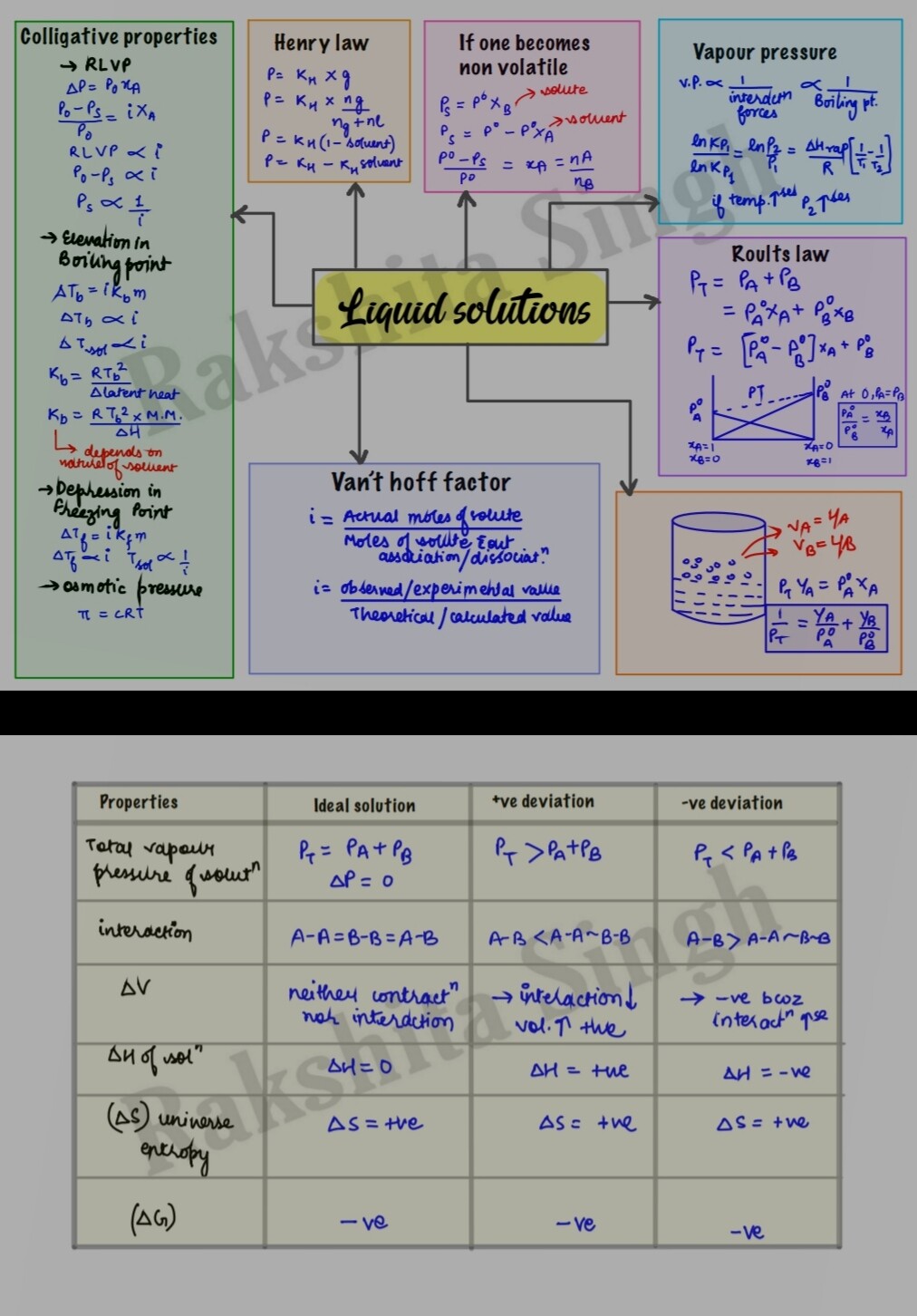
Liquid Solution Mind Maps
#neet-ug #jee:jee-2023 #jee:chemistry
@Dr.NishantJangra @Team_Exprto @ExprtoMentors @Rajpoot @Mbbs_dream
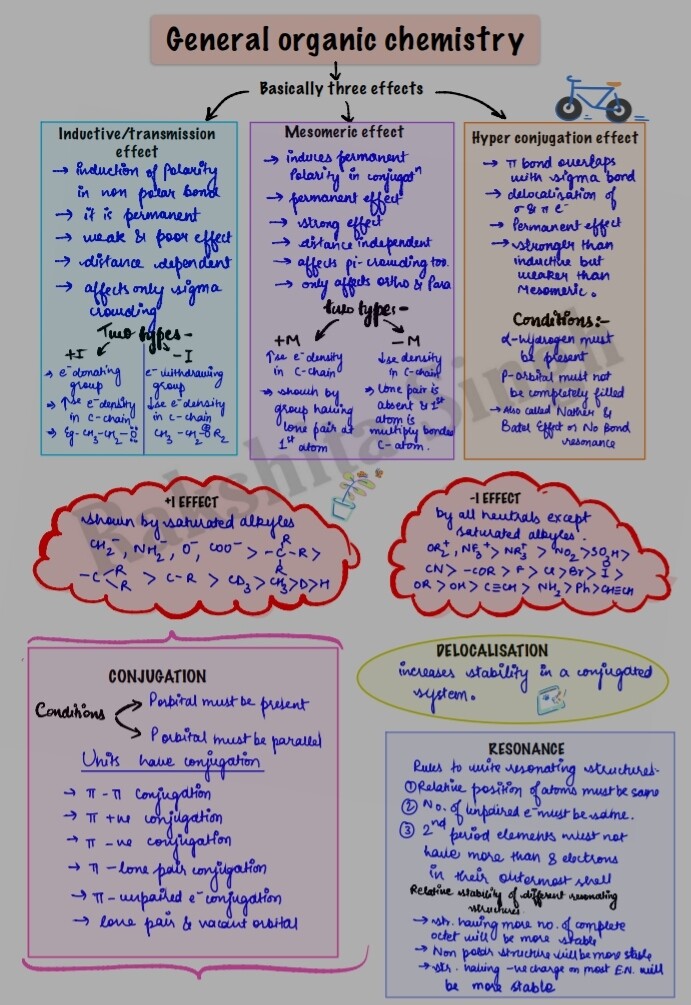

General organic chemistry mind maps
#jee:chemistry #neet-ug:chemistry #neet-ug:neet-2023 #exprto #mentorship
@ExprtoMentors @Team_Exprto @Rajpoot @Dr.NishantJangra

